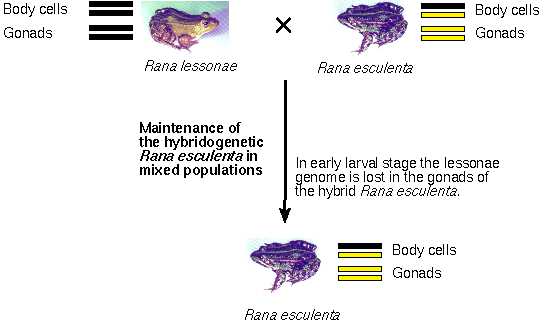

The term hybridogenesis was coined by R. J. Schultz and indicates a reproductional mode which is found in a few animal groups (e.g. the topminnow Poeciliopsis, a small fish in desert streams in Mexico and Soutwestern USA; water frogs; Bacillus, stick insects in Italy). This mode marks hybrids between two parental species (A,B) who are able to reproduce by backcrossing which one of the parent. These hybrid normally contain two chromosome sets (AB, one from each parent species) in their body cells, but in the gonads (ovar or testicles) the chromosome set of one parent is lost, so that only one set remains (A or B), with A in their gonads, hybrids can backcross with B and vice versa.







 Go to quick links
Go to quick search
Go to navigation for this section of the ToL site
Go to detailed links for the ToL site
Go to quick links
Go to quick search
Go to navigation for this section of the ToL site
Go to detailed links for the ToL site